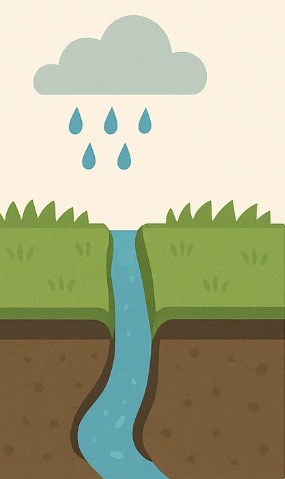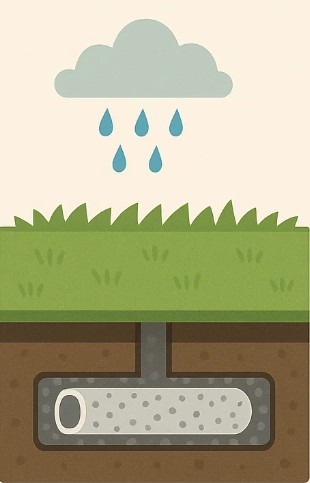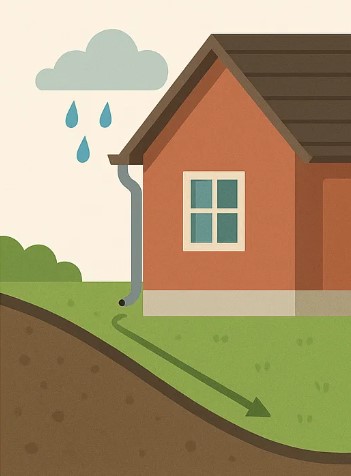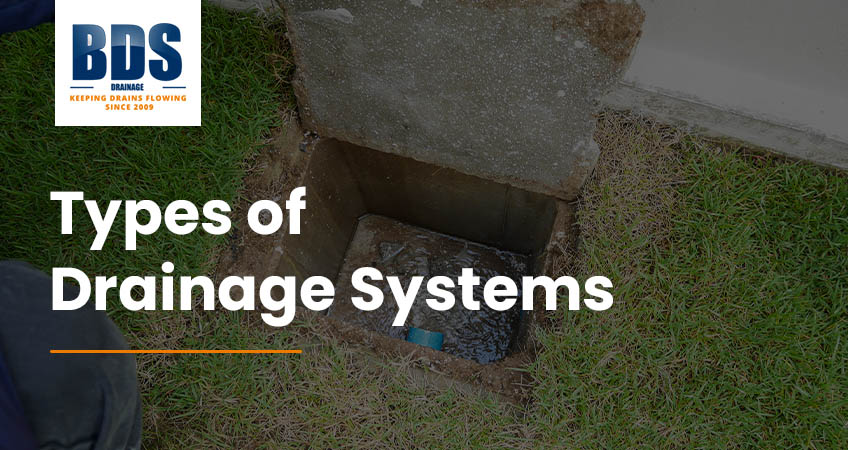When was the last time you gave your drainage system a second thought? Probably never, right? The truth is, effective drainage systems are the unsung heroes of our daily lives, quietly preventing waterlogging, structural damage, and disrupted plumbing. Whether it’s keeping your garden pristine or making sure stormwater doesn’t flood your home, drainage systems are vital.
At BDS Drainage, we have years of experience ensuring homes and businesses are protected from water-related damage. With this blog post, we’ll unravel the mysteries of drainage systems and provide a comprehensive guide on how they work and why they’re so important.
What is a drainage system?
At its core, a drainage system is a structure or network designed to direct water away from specific areas, be it homes, gardens, or public roads. Its primary goal is simple yet critical—to prevent water build-up, which can lead to erosion, water damage, and health concerns caused by standing water.
Without a functioning drainage system, water can wreak havoc on your property. Puddles may seem harmless at first, but over time, they can weaken your home’s foundation, flood basements, and even lead to pesky mould and mildew issues. Installing and maintaining the right kind of drainage system ensures the longevity and integrity of your property.
Types of drainage systems
Modern drainage systems come in various forms, each suited for specific scenarios. From managing garden runoff to routing stormwater away from your home, here are the key types as well other drainage systems you should know:
Surface water drainage systems

Surface drainage systems are perhaps the most visible kind. They focus on removing water from the land’s surface, such as your lawn, driveway, or even a football pitch.
How do they work? These systems use shallow channels or ditches to guide water away from the surface. The land is often graded or sloped to help water flow more efficiently into these channels. Here are a few examples:
- Open drains: Channels dug into the ground to remove excess water.
- Humps and hollows: A design that relies on slightly raised and lowered surfaces to guide water.
- Levees: Raised barriers created to divert water flow and manage flow velocity.
- Grassed waterways: Areas planted with grass designed to slow, filter, and direct water runoff. Often seen in protected areas or as part of a sustainable development.
One specific example of a surface drainage system is cast-in-place trench drains. These simple yet effective solutions are often used in commercial and industrial spaces to channel surface runoff effectively.
Subsurface drainage systems (French drains)

Subsurface drainage systems take things a step further. Unlike surface drainage, they are installed beneath the top layer of soil and are ideal for addressing water that accumulates below ground. These systems are commonly called French drains.
French drains are networks of perforated pipes placed within trenches filled with gravel, guiding water away from the soil’s root level. They’re perfect for keeping waterlogged gardens or farms well-drained. If you’ve noticed soggy patches of grass or plants not growing well, this system might just be your answer.
Slope drainage systems

Slope drainage systems are designed to do exactly what their name suggests—guide water down a slope. These systems are ideal for hilly terrains where water needs to flow downward to prevent pooling near structures. How is this achieved? By using pipes anchored along an incline to swiftly move water away from critical areas.
Your home’s downspouts and gutter systems are excellent examples of slope drainage systems in action. They act as your first line of defence during heavy rain, collecting water from your roof and directing it away from your home.
These systems often route water into:
- Aluminium extensions or downspout drains.
- Buried drainpipes.
- Rain barrels.
- Underground pipes and sewer lines for urban settings.
With gutter systems, water passes effortlessly from your roof to its designated outlet, leaving no chance for pooling or over-saturation.
Common drainage system problems
Even the best-planned drainage system isn’t immune to problems. Here are some common issues that can compromise its functionality:
Blockages in gutter drains
Debris, sediment, and leaves can clog drainage systems, preventing water from flowing as intended. Over time, this can cause overflow and water damage.
Poor design
A drainage system is only as good as its design. Poorly executed drainage solutions may cause water to pool in unwanted areas, defeating its very purpose. Always consult drainage experts for proper planning and installation.
Root intrusion
Tree roots have a knack for finding and infiltrating drainage pipes, causing cracks and blockages. This is especially common in older clay pipes.
Cracks and collapses
Over time, wear and tear, weather conditions, or even heavy structures above the ground can lead to cracks or collapses in pipes, severely affecting how your drainage system functions.
Why understanding drainage matters
Knowledge is power, even when it comes to drainage systems. By understanding the types of drainage systems available and the problems they can face, homeowners and businesses alike can make informed decisions about installation and maintenance.
Actively avoiding delays in addressing drainage issues can save you from costly repairs in the future. Whether it’s designing a new system for a landscaped garden or upgrading an old one in your home, knowing your options makes a world of difference.
BDS Drainage: your go-to drainage experts
At BDS Drainage, we’re passionate about keeping your properties safe and dry. With years of expertise, we provide tailored services to suit your unique needs—from inspections and maintenance to repairs and installations.
Whether it’s dealing with blocked drains or designing a new system, our team of drainage experts has got you covered. Don’t leave your drainage to chance; contact us today for reliable and efficient solutions you can count on.

